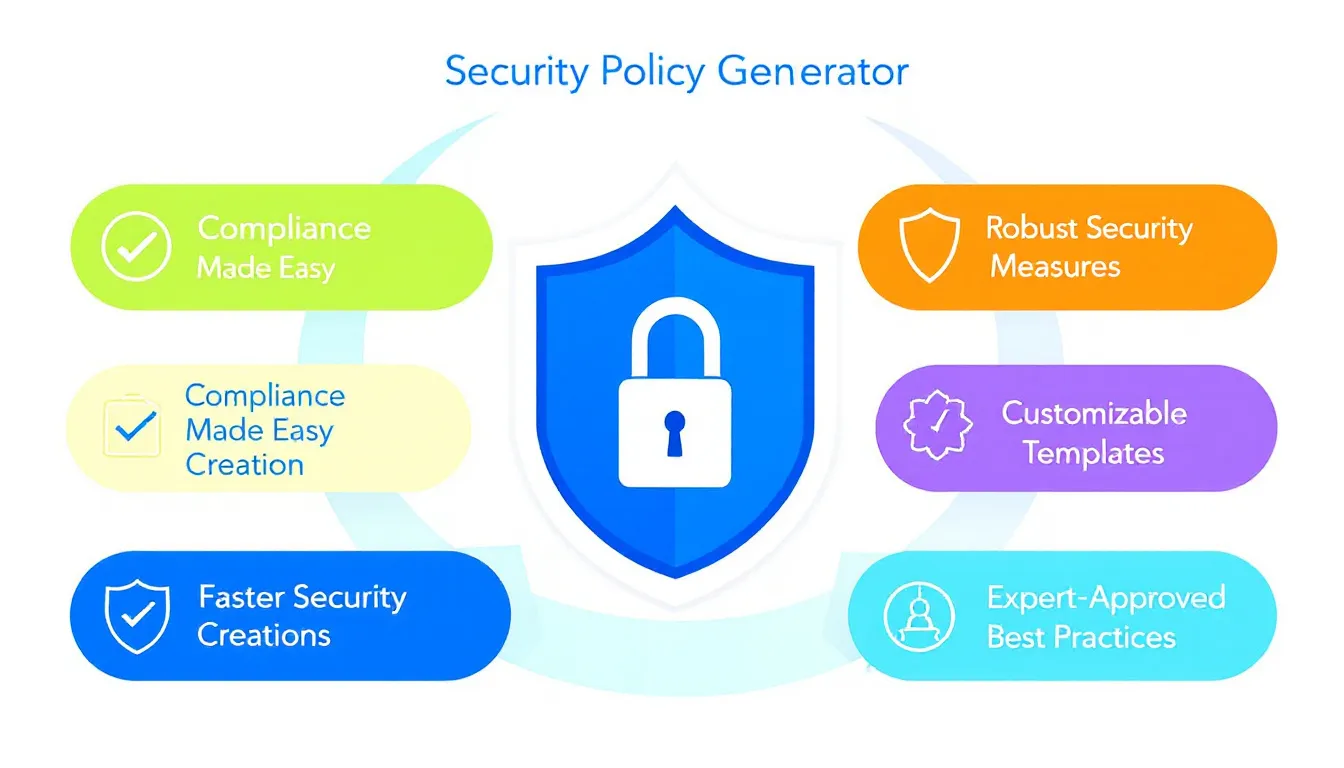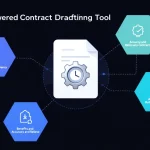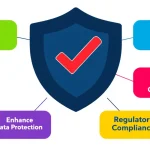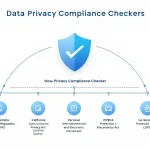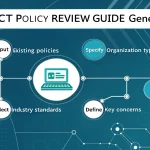Security Policy Generator
Generating policy...
Is this tool helpful?
How to Use the Security Policy Generator Effectively
Use the Security Policy Generator to create a tailored security policy for your organization by filling out the form with the following information:
- Subject/Entity: Enter the name of the organization or unit you are creating the policy for. For example, use “Sunrise Renewable Energy Ltd.” or “Downtown Community Center” to define the entity clearly.
- Key Security Considerations: List the main security concerns specific to your context, such as “Mobile device management, insider threat monitoring” or “Physical access control, secure data backup.”
- Industry Type (Optional): Provide your industry or sector to customize the policy accordingly. Examples are “Retail banking” or “Non-governmental organization.”
- Compliance Requirements (Optional): Add relevant regulatory standards your organization follows, like “SOX, FISMA” or “COPPA, FERPA.”
- Click the Generate Security Policy button to receive a comprehensive, customized security policy you can review and adjust further.
After generating, you can copy the policy content and adapt it to your organization’s specific needs.
Introduction to the Security Policy Generator: Definition, Purpose, and Benefits
What Is a Security Policy Generator?
The Security Policy Generator is a practical tool that helps you quickly draft a detailed security policy customized to your organization’s unique requirements. It automates much of the work involved in creating clear, structured guidelines to protect assets, sensitive information, and personnel.
Purpose of the Security Policy Generator
This tool streamlines the policy creation process by:
- Producing tailored security policies based on your inputs
- Ensuring key risk areas and vulnerabilities are addressed
- Incorporating relevant industry standards and compliance rules
- Reducing the time and effort needed to develop thorough security policies
- Delivering a solid policy framework organizations can build on
Benefits of Using the Security Policy Generator
- Time Saving: Create detailed security policies in minutes rather than days or weeks.
- Consistency: Apply uniform security measures across different departments and teams.
- Customization: Tailor policies to your industry, compliance needs, and organization size.
- Comprehensive Coverage: Address security issues that might be overlooked without expert input.
- Cost Effective: Avoid hiring expensive consultants for initial policy drafts.
- Up-to-date Practices: Integrate the latest security guidelines and regulatory requirements.
- Scalable: Adapt policies easily for small startups or large multinational organizations.
- Risk Reduction: Identify and mitigate security threats proactively.
- Regulatory Compliance: Help satisfy legal and industry-specific standards efficiently.
- Stronger Security Posture: Build a reliable foundation for your organization’s overall protection strategy.
Practical Usage of the Security Policy Generator
The Security Policy Generator has practical applications across many industries and organizational types. Here are some common scenarios where it adds value:
Startups and Small Enterprises
Smaller organizations often lack in-house security expertise. This tool helps them create foundational policies without extensive resources.
- Example: A boutique design firm develops a policy addressing client confidentiality and secure file sharing.
Educational Institutions
Schools and universities protect sensitive student records and research data with policies tailored to their environment.
- Example: A community college generates policies focused on student privacy and secure access to campus systems.
Healthcare Providers
Healthcare organizations meet strict standards such as HIPAA through customized policy creation.
- Example: A clinic network ensures its policy covers patient data protection and secure electronic communications.
Financial Institutions
Banks and credit unions safeguard financial data and comply with regulations like PCI DSS.
- Example: A regional bank produces a policy focused on fraud prevention and secure online banking access.
Remote Work Environments
Distributed teams require policies addressing secure home setups, VPN use, and data handling on personal devices.
- Example: A remote software company creates a security policy balancing strong protections with employee flexibility.
Non-Profit Organizations
Non-profits protect donor information and volunteer data with clear, accessible policies.
- Example: A charity drafts policies for data protection and secure record keeping of sensitive beneficiary information.
Government Agencies
Government bodies require strict security policies complying with laws and safeguarding critical infrastructure.
- Example: A municipal department crafts policies focused on classified data handling and secure communication.
Large Corporations
Multinational companies use the tool to create base policies customized per region, ensuring global consistency.
- Example: A global tech firm develops a corporate-wide policy adapted for each country’s data privacy regulations.
Important Disclaimer
The calculations, results, and content provided by our tools are not guaranteed to be accurate, complete, or reliable. Users are responsible for verifying and interpreting the results. Our content and tools may contain errors, biases, or inconsistencies. We reserve the right to save inputs and outputs from our tools for the purposes of error debugging, bias identification, and performance improvement. External companies providing AI models used in our tools may also save and process data in accordance with their own policies. By using our tools, you consent to this data collection and processing. We reserve the right to limit the usage of our tools based on current usability factors. By using our tools, you acknowledge that you have read, understood, and agreed to this disclaimer. You accept the inherent risks and limitations associated with the use of our tools and services.
